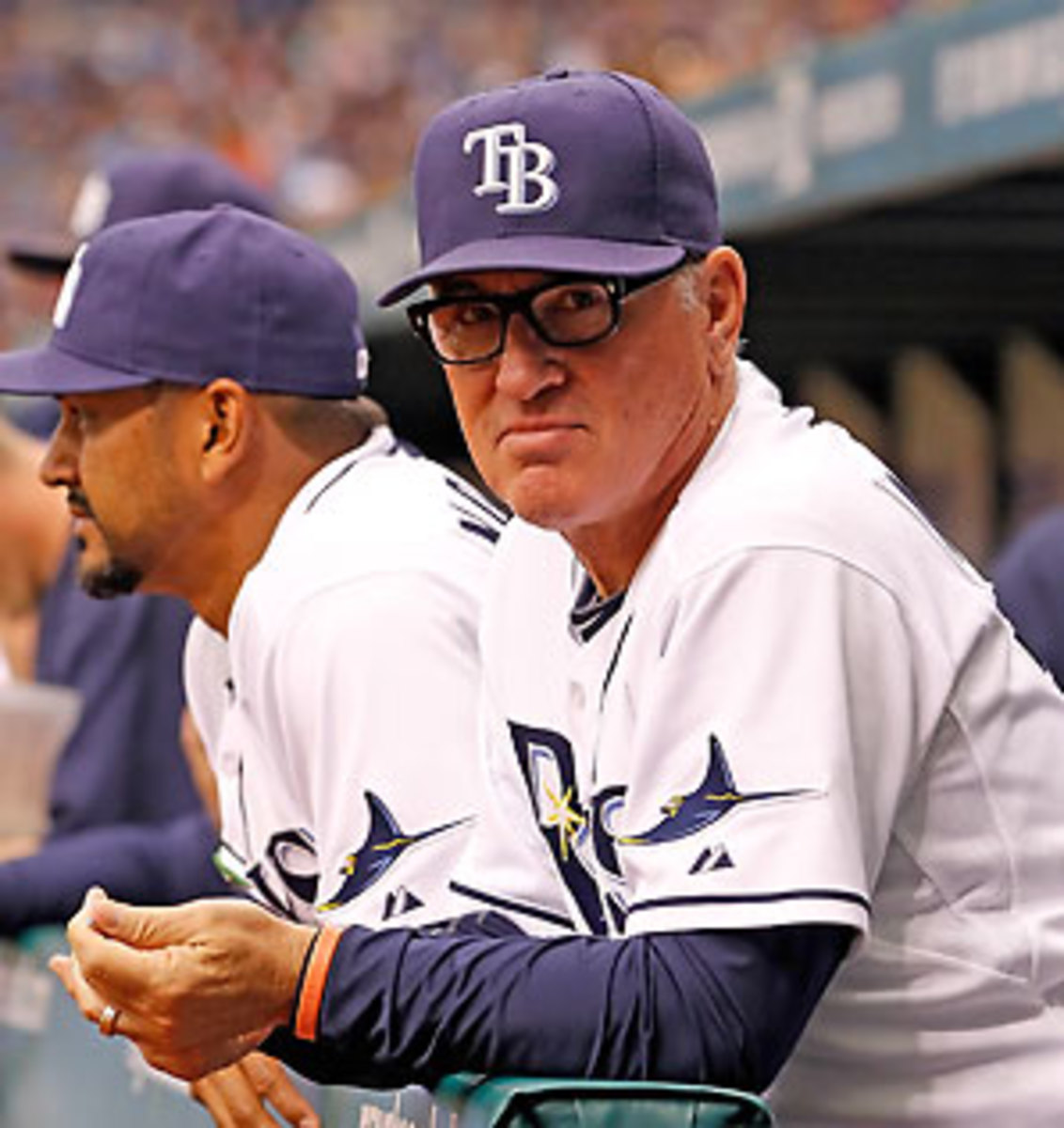Rays' shifting priorities just part of their radical approach
Baseball is seeing a sixth straight season in which runs are declining. The trendline since 2006, on a runs-per-game basis, looks like this: 9.72, 9.59, 9.30, 9.23, 8.77, 8.57, 8.55. Meanwhile, teams have access to more data and analytics on an increasing basis. Are the trends coincidental? Joe Maddon thinks not.
The Tampa Bay Rays manager, one of the most forward-thinking managers in the game, may have as much information at his disposal as anyone. The Rays, who no longer use advance scouts in the traditional sense -- with scouts attending rivals' games and filling out reports -- scout every major league game by video and digitize all the information. Maddon uses the information, for example, to position his defensive players with more shifts than any club in baseball. His shifts have grown more numerous and extreme this season, especially with an increase against righthanded hitters. The more information he has, the more precise Maddon operates. This growing intelligence, he said, always favors the prevention of runs, not the production of runs.
"Data helps the pitching and defense," he said. "I don't think there's anything in there that helps the hitter. I think that's one reason why we're seeing run-scoring go down the way that it is."
Maddon's belief is that the more information you have on a hitter the more you expose not only his weaknesses but also where he will hit the ball against certain pitchers. Of course, pitchers need to execute pitches and the shifts are not foolproof. But the information increases the probability of getting the hitter out, Maddon said.
It looks like he is on to something. Like scoring runs, batting average is declining for a sixth straight year. The major league batting average is .252. It hasn't been this hard to get a hit in the majors since 1972 -- the last year without a DH.
Andy Pettitte turns 40 years old next Friday. He sat out last season. And yet never before has he struck out a higher percentage of batters (23.2) or been more difficult to hit (.225). What gives?
"Right now I feel like I can put any pitch where I want it," he said.
Pettitte may not throw as hard as he did even as recently as 2010, but his stuff is better. His four-seam fastball can eat up hitters even at 88 mph because it has a natural cut to it. His two-seam fastball has tremendous downward run. And he can throw his cutter between 79 and 85 mph several different ways: frontdoor cutter, backdoor cutter, slurvey cutter with a looping break and hard cutter with a sharp break. He can also drop in a curveball.
"I have six or seven pitches I have confidence in to throw any time," Pettitte said. "I feel like I can get the ball in on hitters whenever I want, and that opens up the outside. I guess that's where the strikeouts are coming from."
The Yankees signed Pettitte as back-of-the-rotation insurance and he is pitching like a front-of-the-rotation pitcher. It is only five starts, but so far manager Joe Girardi said the only element about Pettitte's return that has surprised him is "his stamina." Pettitte has held his stuff deep into games.
"People say he was out for a year," pitching coach Larry Rothschild said, "but it's not like he was on the couch for a year. He was working out and always keeps himself in tremendous shape. The guy is a true professional."
David Price leads the American League with eight wins this year, and his start against the Yankees Thursday night showed the high degree of difficulty of such an achievement. Price held a 5-1 lead in the fifth inning and was two outs away from qualifying for the win, but was facing Alex Rodriguez and Robinson Cano in Yankee Stadium with the bases loaded. In a riveting sequence, Price needed to throw 17 pitches to get two great hitters out: 11 to Rodriguez (most of them curveballs) before finally getting a strikeout and six to Cano (all of them fastballs) before getting a grounder to second base. Price's last pitch of the night -- and his 38th of the inning in which he pitched exclusively out of the stretch after a leadoff single -- also happened to match his hardest pitch of the night, at 98 mph.
It was the definition of a stress inning: emptying the tank against two great hitters in a hostile environment surrounded by runners in a high-pitch inning. But that's life with the unbalanced schedule in the AL East, where pitchers continually see strong lineups.
Think about this: Price has pitched a quarter of his major league career against two teams, the Yankees and Red Sox -- 28 of his 106 games, or 26 percent. Think about all of those stress innings. (By comparison, Jered Weaver of the Angels has faced the Yankees and Red Sox in only 11 percent of his games.)
Here's one way to gauge the toll. Price's winning percentage against New York and Boston (.632) is almost exactly the same as it is against the rest of baseball (.627). But it's so much harder getting through those two teams that his ERA against the Yankees and Red Sox (3.68) is more than half a run higher than it is against others (3.11).






